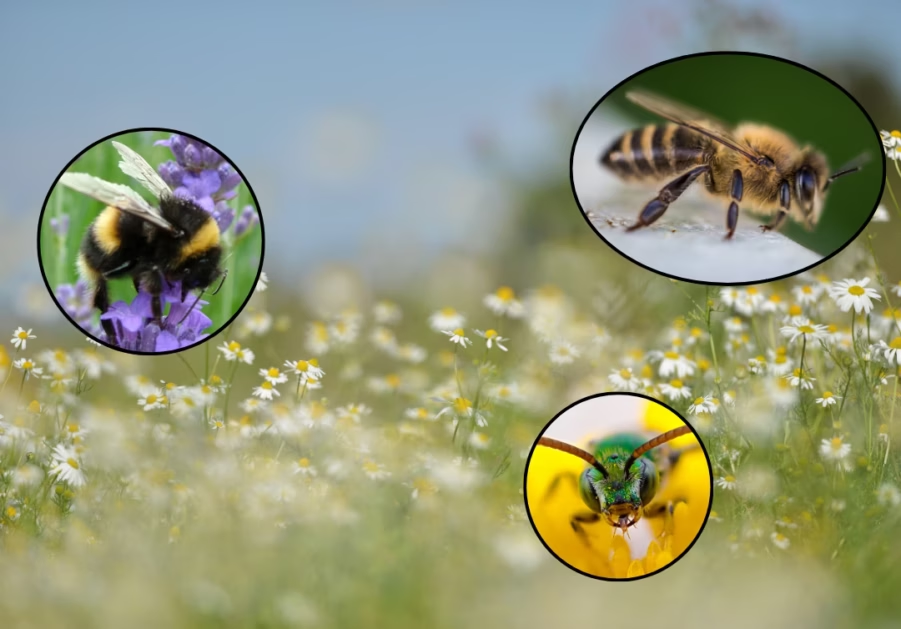Bees are a common sight around homes and gardens, in meadow habitats, and just about anywhere with abundant flowers. Yet if you read the news, or notice any number of bumper stickers proclaiming that we should “save the bees”, you might get the sense that there may be trouble in the bee world. Farmers, scientists, and conservation organizations have shown alarm about declining bees for years, suggesting that these important insects are under threat. So what do all these claims mean? Are bees going extinct? This The Deep Stuff post will explore those questions and how the story may be more complicated than it seems.
Read more: Why is it bad when species go extinct?
Which bees?
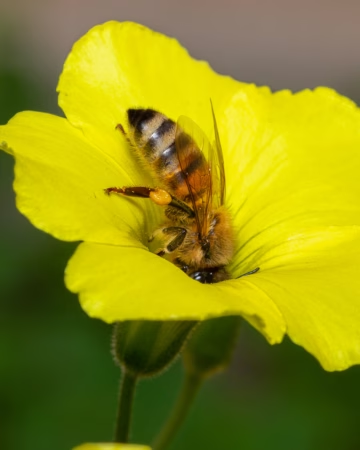
One extremely important point that people often leave out of the “save the bees” conversation is what species we’re actually talking about. In other words, which bees need to be saved, if any? As you may have learned, there are more species of insects in the world than just about any other form of life. These small, numerous critters play very important roles in our planet’s ecosystems, including as pollinators. Being able to identify insects, even by telling the difference between broad categories, is an important way to understand and protect the natural world.
Read more: The essential 8-step guide to identify bugs in your house or yard
Given the number of insect species on Earth today (although not precisely known, this number is in the millions!), it should be no surprise that there are plenty of different kinds of bees out there. Among all these, the most important bee pollinators in places like North America and Europe can be conveniently split into two groups:
- Honeybees (Apis mellifera)
- Other bee families (like bumblebees, genus Bombus, or leafcutter, carpenter, or mason bees; genus Megachile, Xylocopa, and Osmia, for example)
Although it may seem odd to single out one species like the honeybee as separate from all the rest, we’ll learn why that’s important later in the post. Especially in North, South, and Central America, this is a very important distinction. Let’s start with the honeybees.
The honeybee
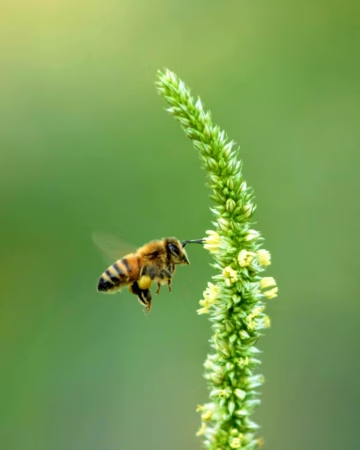
When most people hear the word “bee”, the honeybee is the fellow that comes to mind. These are the beehive-making, honey-producing, Winnie-the-Pooh stinging bees that are best known in pop culture. Honeybees have a highly organized, colonial society where different classes of worker bees work together to build a massive nest in which they cooperatively tend eggs laid by a single queen, and raise their siblings as a big family.
Honeybees are originally from Europe, Asia, and Africa, where they were domesticated by people for their ability to produce delicious honey and products like wax that are useful for human crafts. In some ways, this makes them a lot more like livestock than wild animals: people take care of honeybees by making houses for them to live in, tending them like sheep or cows, and extracting the products that they need. Apiculturists, or bee-keepers, aren’t much different from chicken or duck farmers, taking care of a group of domestic animals for their useful outputs. Historians estimate that we have been raising and keeping honeybees for over 7,000 years!
Are honeybees invasive?
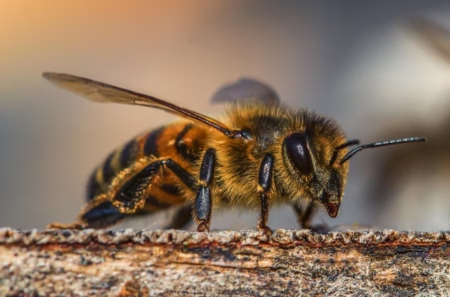
When the topic of honeybees comes up with readers and my nature-loving friends in North America and Australia, they often ask whether honeybees are invasive. After all, they have been artificially introduced to those areas by people, and did not reach the continents naturally. Because of this, they can certainly be called non-native or introduced species. But does that make them invasive?
Read more: Why are invasive species a problem?
In order to correctly label a species as invasive, scientists need to find concrete evidence that the species causes negative impacts on the local ecosystem or other species. In the case of honeybees, there is some evidence that honeybees are invasive in regions like Brazil, where they are the dominant member of the bee community and reduce the abundance of other species. These sort of ecological impacts are probably highest where honeybees have escaped captivity and become feral, as with feral domestic goats and pigs in other parts of the world, which cause serious ecological damage.
Why are honeybees special?
This special relationship explains how honeybees got so far outside of their native range, and why you can find them all over the Americas and even in Oceania (including Pacific Islands like Hawai’i and the continent of Australia). In addition to producing delicious honey, honeybee colonies can be moved around at will when they nest in special bee-boxes, giving farmers portable pollinators for their crops. Without the commercial labor of these hard-working bees, it might be difficult to produce important pollinator-dependent crops like:
- Almonds
- Peaches
- Apples
- Broccoli, mustard, and cabbage
- Peppers
- Coffee
In total, honeybees probably contribute about US$15 billion to the U.S. economy every year! With that in mind, it isn’t very surprising that honeybees are the most abundant, widespread, and popular bees in the world. Their great importance for the economy and people’s livelihoods as well as their prevalence in pop culture, is why they are in a class of their own.
Wild bees
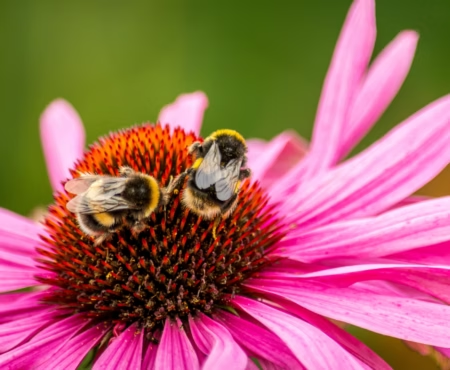
Despite their celebrity status, honeybees are still only one of more than 20,000 be species in the world. For the most part, other groups of bees, including many solitary species that do not form hives, have not been domesticated by humans. Rather than chickens or cows, they’re more like songbirds, butterflies, or foxes: different forms of wildlife with which we share our planet.
Because of this, people are much less aware of these many other bees and their many different lifestyles, diets, and nesting habits. As you might notice from my examples above, many (like mason bees, carpenter bees, and leafcutter bees) are named for the way they build nests. Like birds, many of these species build solitary nests where typically a female parent, after mating, lays her eggs and raises young without help from others. Because of their solitary lifestyle, many of these bees are territorial, protecting areas with good food and material resources, which keeps their numbers low. They are also typically much smaller in numbers. They are also typically smaller than honeybees and have less attractive coloration, making them harder to notice along with their low densities and smaller numbers.
Bumblebees, which are among the most visible and noticeable of the non-honeybees, do in fact form small colonies. Many species nest in underground chambers, and do produce honey, although they don’t have the large and complex hives of honeybees. Bumblebees are typically similar sized to larger than honeybees, and are fuzzier and more brightly colored, which can make them very attractive to people. In my experience, they also seem much less likely to sting than honeybees and wasps, which gives the impression of a friendlier, more relaxed demeanor.
Wild pollinators: unsung heroes?
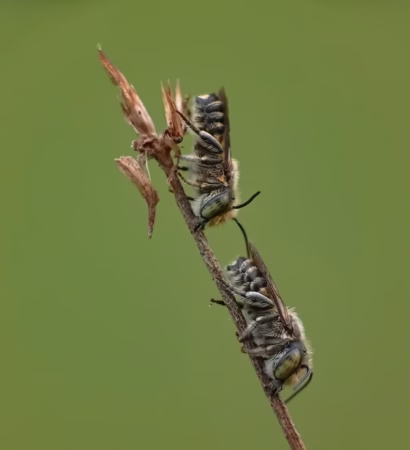
Although wild bees don’t get the press coverage that honeybees do, they have the same superpowers for pollination and can be a huge benefit to crops. In fact, researchers have demonstrated that, in many cases, wild bees are more efficient pollinators than honeybees, making them even better farmhands! This is especially true for native crops and wildflowers, which can sometimes depend on specific species of bees to help them reproduce. Without these local bees, their chances of keeping their populations going can dwindle. Thus, even if these local bees are replaced by domestic honeybees, it may pose a problem for plants in the local ecosystem.
Are bees actually declining?
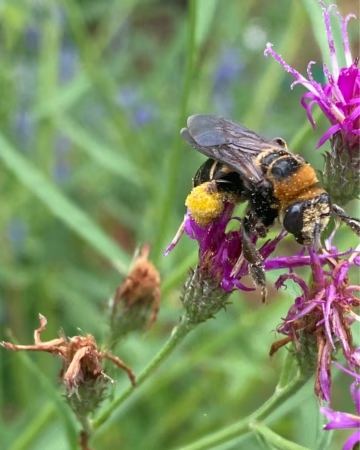
Returning to our original question, it’s important to know that scientists have been observing declines in both honeybee and other wild bee populations for some time. Although these declines are still the subject of urgent research by scientists, it does seem like both the severity and the drivers of declines are different between honeybees and other wild bees.
Among honeybees, U.S. Department of Agriculture scientists have observed a decrease in the number managed beehives for several decades, and starting around 2004, beekeepers started to notice sudden, unexpected collapse of honeybee colonies in their care. This “colony collapse disorder” is still poorly understood
Meanwhile, scientists performing a global review in 2021 found that 25% fewer wild bee species were turning up in field research. Meanwhile, in 2017, 21 species of bumblebee were listed as endangered in the United States because of their steep population declines. According to the IUCN’s European Red List of Bees, around one third of European bee species have shown major declines.
What are the main threats to bees?
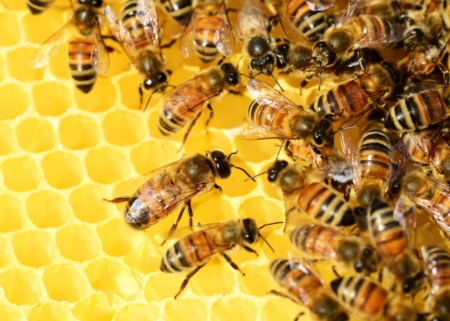
For both honeybees and wild bees, the situation seems to be a matter of “death by a thousand cuts”. That is, rather than having a single over-arching threat, these valuable insects are being affected by several pressures all acting at once. Even if individually each one isn’t enough to stress populations to collapse, acting in concert they seem to do substantial harm.
For honeybees, the major suspected threats are:
- Varroa mites (Varroa destructor), which feed on adult bees as ectoparasites (like ticks!)
- Viruses, which can weaken individual bees and their immune systems, and spread through their colonies
- Fungal diseases (Nosema spp.), that weaken bees’ digestive systems and reduce their lifespan
- Land-use change, which decreases available nutritional resources for the bees
- Pesticide use, which can poison bees through long-term exposure even if they aren’t the target
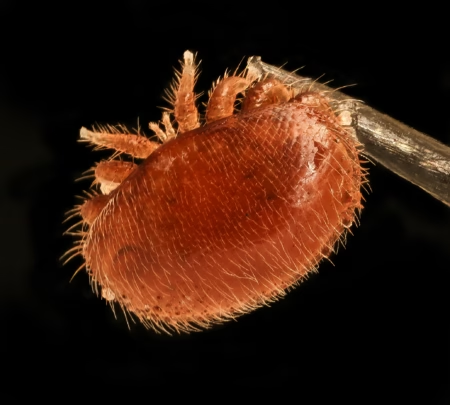
Native bees share some of the same threats, for example exposure to pesticides and their residues, as well as fungal diseases and viruses. In addition, many species are being powerfully impacted by habitat loss, since unlike honeybees they depend largely on natural habitats. With the loss of the woodlands, marshes, meadows, and other areas that they need to survive, they are disappearing fast. Furthermore, hotter average temperatures from a changing climate are putting serious stress on wild bees. Interestingly, honeybees themselves can be a problem for other bee species, because they may compete with them for food or spread diseases among them.
Read more: Why is climate change bad for wildlife?
How do we ‘save the bees’?
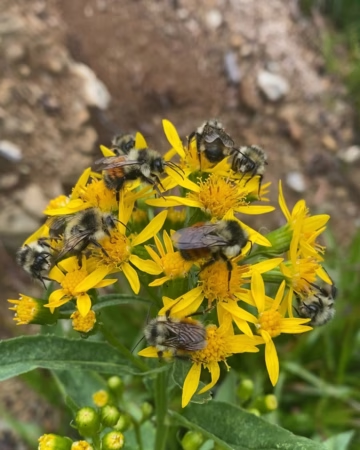
While honeybees are tremendously important, it is important to recognize that they are domestic, not wild animals. As I mentioned earlier, they are more like livestock (for example cows and chickens), which are no more likely to go extinct than dogs or cats are. This makes the idea of conserving honeybees the way we conserve other wildlife seem a little misplaced. While research and investment in maintaining domestic bee colonies for crop pollination and honey production is important, that won’t protect the important biodiversity of insects in the world.
Read more: What is biodiversity?
Instead, conservation biologists are rightly concerned with the many native bee species in places like Australia and North and South America that show dramatic population declines. As my friend and colleague Dr. Nick Dorian put it in his excellent TEDx talk, “We’re saving the wrong bees!”
How to help save bees (and other pollinators!)
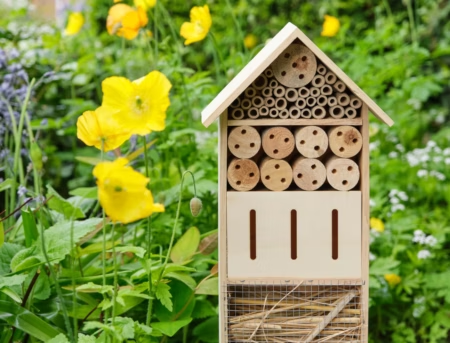
Fortunately, many of the things that the average person can do to help wild bees will do plenty to benefit honeybees as well. Most of these involve using wildlife-friendly gardening and landscaping techniques. You can read all about this in Gulo in Nature‘s post series on Gardening for Wildlife, but here are a few starter suggestions:
- Avoid or minimize the use of pesticides and herbicides on your property
- Plant native flowers for which many wild bees are adapted
- Keep a variety of different flower species in your garden to provide floral resources across the Spring, Summer, and Fall
- Provide nesting habitats like bee hotels, bare patches of soil, and rockpiles or stone walls for bees to nest in
- Let leaves and plant debris stay-put in some parts of your yard, to give insects a place to spend the Winter
Read more: Is it better not to rake your leaves?
Sources and Further Reading
- U.S. Department of Agriculture: Honey Bees.
- Garibaldi et al., 2021: Negative impacts of dominance on bee communities: Does the influence of invasive honeybees differ from native bees? Ecology.
- Dicks et al., 2021: A global-scale expert assessment of drivers and risks associated with pollinator decline. Nature Ecology & Evolution.
- Rhodes, 2018: Pollinator Decline-An Ecological Calamity in the Making? Science Progress.
- U.S. Fish and Wildlife Service, 2017. Rusty Patched Bumble Bee (Bombus affinis) Fact Sheet.
- Fürst et al., 2014. Disease associations between honeybees and bumblebees as a threat to wild pollinators. Nature.
- Zattara and Aizen, 2021. Worldwide occurrence records suggest a global decline in bee species richness. One Earth.
Thanks for reading!
If you enjoyed this post, please support the blog by sharing this post with friends and following the blog on Social Media. If you have a post that you’d love to see, get in touch using the Contact Page. Until next time, go get to know your natural world!

